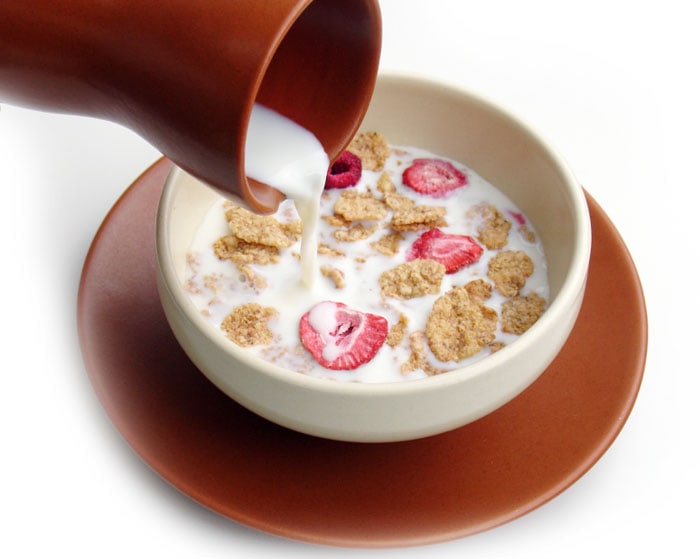
Written By: Gloria Tsang, RD
Title: Founding Registered Dietitian
Alumni: University of British Columbia
Last Updated on:

Confused at the breakfast cereal aisle? You are not alone. The cereal aisle is changing. I went to the supermarket to pick up a box of my usual cereal a few days ago and was overwhelmed by the endless rows of colored boxes on tightly packed shelves. I was curious enough to stop and take a look – and was surprised by the numerous health claims and health logos found on the boxes. Here are my observations:

Table of Contents
These breakfast cereals claim to “help reduce the risk of heart disease” and yes they possibly can. These claims are approved by the FDA as these cereals contain certain heart-health friendly ingredients such as whole grains, psyllium and oats. They are usually low in fat and high in fiber. Examples are cereals containing 100% wheat or bran, oat bran and barley. Unlike the refined corn or rice cereals, these whole grain cereals are not as rapidly digested and absorbed. Therefore you’ll feel full longer and will be less likely to prowl around for pre-lunch snacks.
Many cereals now have been added with real freeze-dried berries, apples and bananas. However, fruits are usually added in low-fiber refined-grain cereals. Therefore it is a better option if you toss in your own fresh fruits to high-fiber cereals. However, this type of cereals is not a bad choice, if you are trying to lure your kids away from eating the sugar-loaded frosted cereals.
Quite a few brands of cereal were found with claims to help you “lose up to x lb in x weeks”. These cereals are often low in fat – but the majority of breakfast cereals are low in fat anyway. There is really nothing special about them. Kellogg’s Special K, for instance, disappointingly has only 1g of fiber per serving. For more waistline friendly cereals, choose high fiber whole grain cereals instead.
It is not difficult to find cereals added with other ingredients such as pecans, almonds or flaxseed. Some cereals are even made with soy too. Since there are so many varieties, it’s best to read the nutritional fact labels when comparing products – specifically look for the fiber content as well as the sugar content.
Breakfast is an important meal to start off your day. Studies showed that athletes who ate breakfast performed better in competition; kids who ate breakfast were able to concentrate more in class; adults who ate breakfast were able to control weight better than those who did not eat breakfast. The recommended intake of fiber is 25 g per day; therefore choose breakfast cereals with at least 5 g of fiber per serving (many cereals with 100% whole grains have much higher amounts of fiber). When reading nutrition labels, also pay attention to the sugar content. Cereals with fruits usually have higher sugar content as sugar is naturally occurring in fruits. However, it is shocking to find some cereals without added fruits, including those marketed to children, containing up to 15 – 20g of refined sugar per serving. That’s not impressive!
Can’t really give up your favorite frosted cereal? Try mixing ‘n matching! Mix in with some high fiber whole-grain cereal as well as fresh fruit with your frosted cereal. Any steps to reducing sugar and increasing fiber in your cereal bowl are a good step!
Alumni: University of British Columbia – Gloria Tsang is the author of 6 books and the founder of HealthCastle.com, the largest online nutrition network run by registered dietitians. Her work has appeared in major national publications, and she is a regularly featured nutrition expert for media outlets across the country. The Huffington Post named her one of its Top 20 Nutrition Experts on Twitter. Gloria’s articles have appeared on various media such as Reuters, NBC & ABC affiliates, The Chicago Sun-Times, Reader’s Digest Canada, iVillage and USA Today.